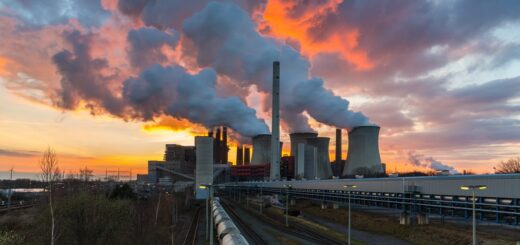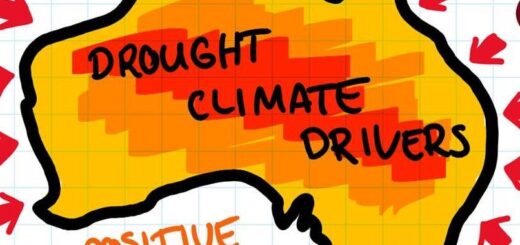National Current Affairs – UPSC/KAS Exams- 27th March 2019
Electoral Bonds
Topic: Governance
In News: The Supreme Court agreed to hear a petition to stay the Electoral Bond Scheme, 2018, under which bonds are being sold right before the Lok Sabha election.
More on the Topic:
- Mooted for the first time in the Union Budget, 2017, Electoral bonds were to be bearer bonds that is they would not be registered in the name of a specific owner but will pay to whosoever owns them. One can purchase these bonds from an authorized bank using cheques or digital payment methods and make donations to political parties using these bonds, which can be redeemed in the accounts of a political party.
What are Electoral bonds?
- Electoral bonds are designed as bearer instruments like Promissory notes that carry no information about the owner but yield to the holder or bearer of the bond. The details of the donor are not made public but are available only with the bank.
- It can be purchased by an Indian citizen or a body incorporated in India.
- A political party registered under RoPA, 1951 that secures at least one percent of votes polled in state elections or Lok Sabha elections will be allotted an account by the Election Commission of India, into which the bonds can be redeemed within 15 days of purchase.
- Donations made through these bonds are exempt from taxes.
- The bonds will be issued in multiples of Rs 1000, Rs 10,000, Rs 1 Lakh, Rs 10 Lakh and Rs 1 Crore and can be bought by the donor with a KYC compliant account.
- They cannot be purchased by paying cash. The maximum amount that a political party can receive as donation in cash is capped at Rs 2000. Electoral bonds thus permit them to raise higher sums.
Concerns:
- No Transparency: The bonds are not registered in the name of a specific person as a result donations through electoral bonds continue to provide anonymity to donors.
- Could be used as conduit for money laundering and hoarding black money Since these bonds continue to provide anonymity to holders, they can be misused much like the Indira Vikas Patras floated as development bonds in 1987 that fell into disrepute owing to similar reasons.
- These will also facilitate round tripping that is rerouting of illicit funds that originate in India, back into the country through a tax haven. Here, it must be noted that India ranks at 19 in a list of 180 countries that figured in the Paradise paper leaks that listed out individuals and companies that moved finances to off-shore locations to evade taxes. Electoral bonds offer secrecy and will encourage such tax evasion.
- Non- disclosure to Election Commission While RoPA,1951 specifies that donations received by political parties in sums greater than Rs 20,000 be disclosed to the tax authorities, the Finance Bill,2017 explicitly provides an exemption from this clause to electoral bonds. This mars the very purpose of cleaning up electoral finance.
Way Ahead:
- The cap of Rs 2000 for cash donations provides an opportunity for flow of black money into elections. This should be eliminated altogether. Election Commission has suggested that parties be made to disclose contributions received in cash for smaller sums in case they exceed 20% of total funds raised. This can be considered.
- An intrusive scrutiny of election expenditure incurred by parties and candidates is required so as to ensure detection of black money in the system.
- To prevent parties from flouting expenditure norms, Election commission should permit higher expenditure limit for candidates.
- A shorter campaign period will limit expenses incurred by parties. Simultaneous elections should also be explored for the same reasons.
- National Electoral Fund, as suggested by former Chief Election Commissioner S.Y Quraishi, to which all donors can contribute is another plausible alternative.
- To bring all parties on a level playing field and to make private donations less relevant, state funding of elections can also be explored.
What are electoral bonds? Do you consider introduction of electoral bonds as an improvement over past attempts at election funding reform in India? Critically analyse.
Source: The Hindu
India’s carbon dioxide emissions up 5%
Topic: Environment and Ecology
In News: India emitted 2,299 million tonnes of carbon dioxide in 2018, a 4.8% rise from last year, according to a report by the International Energy Agency (IEA).
More on the Topic:
- India’s emissions growth this year was higher than that of the United States and China the two biggest emitters in the world and this was primarily due to a rise in coal consumption. China, the United States, and India together accounted for nearly 70% of the rise in energy demand.
- India’s per capita emissions were about 40% of the global average and contributed 7% to the global carbon dioxide burden. The United States, the largest emitter, was responsible for 14%.
India’s Emission Targets:
- As per its commitments to the United Nations Framework Convention on Climate Change, India has promised to reduce the emissions intensity of its economy by 2030, compared to 2005 levels.
- It has also committed to having 40% of its energy from renewable sources by 2030 and, as part of this, install 100 GW of solar power by 2022.
- However the IEA report, made public, showed that India’s energy intensity improvement declined 3% from last year even as its renewable energy installations increased 10.6% from last yea
Global Trend:
- Global energy consumption in 2018 increased at nearly twice the average rate of growth since 2010, driven by a robust global economy and higher heating and cooling needs in some parts of the world.
- Demand for all fuels increased, led by natural gas, even as solar and wind posted double digit growth. Higher electricity demand was responsible for over half of the growth in energy needs.
- Energy efficiency saw lack luster improvement. As a result of higher energy consumption, carbon dioxide emissions rose 1.7% last year and hit a new record, the authors of the report said in a press statement.
- The United States had the largest increase in oil and gas demand worldwide. Gas consumption jumped 10% from the previous year, the fastest increase since the beginning of IEA records in 1971.
- According ti India it will cost at least $2.5trillion (Rs. 150 trillion approx.) to implement its climate pledge, around 71% of the combined required spending for all developing country pledges.
Source: The Hindu
New rules for drugs, clinical trials
Topic: Health
In News: The Union Health Ministry has notified the Drugs and Clinical Trials Rules, 2019, with the government stating that the move is aimed at promoting clinical research in the country.
More on the topic:
- The rules will apply to all new drugs, investigational new drugs for human use, clinical trials, bio-equivalence studies and ethics committees.
- The highlights of the notification include reduction in time for approving applications, which has now come down to 30 days for drugs manufactured in India and 90 days for those developed outside the country. “Also, in case of no communication from Drugs Controller General of India, the application will be deemed to have been approved.
- As per the new rule, the requirement of a local clinical trial may be waived for approval of a new drug if it is approved and marketed in any of the countries (EU, U.K., Australia, Japan and U.S.) specified by the Drugs Controller General with the approval of the government.
- “The new rules will ensure patient safety and an ethics committee will monitor the trials and decide on the amount of compensation in cases of adverse events
Source: The Hindu
Global Energy Transition Index
Topic: Economy
In News: India has moved up two places to rank 76th on a global energy transition index, which has ranked 115 economies on how well they are able to balance energy security and access with environmental sustainability and affordability.
More on the Topic:
- Sweden remains on the top on this annual list compiled by Geneva-based World Economic Forum (WEF) and is followed by Switzerland and Norway in the top three, as per its latest report released on Monday.
- The WEF said energy systems have globally become less affordable and less environmentally sustainable than they were five years ago, though access to energy has improved with less than 1 billion now living without access to electricity.
- India is amongst the countries with high pollution levels and has a relatively high CO2 intensity in its energy system.
- Despite this, India has made significant strides to improve energy access in recent years, and currently scores well in the area of regulation and political commitment towards energy transition.
India’s Performance:
- There was a ground for optimism regarding India despite the current outdated energy system not being ready for transition, because an enabling environment is being built to support future transition.
- While India has scored low in terms of system performance (ranking 97 and 86, respectively), it ranks considerably higher when it comes to readiness (45 and 61, respectively). Overall, India has moved up two places from 78th last year.
- China is ranked even lower than India at 82nd position, though it ranks very high at seventh place in the world for regulation and political commitment.
- Despite its low ranking, India is the second best in the BRICS block of emerging economies, with Brazil being the best at 46th place globally. However, India is the only amongst the five economies to improve its rank since last year.
Critically analyse the challenges India facing to achieve to reduce the emissions intensity of its economy by 2030, compared to 2005 levels.
Source:The Hindu
ISRO launches ‘Young Scientist Programme’
Topic: Science and Technology
In News: The Indian Space Research Organisation (ISRO) has launched a special programme for school children called ‘Young Scientist Programme’ or ‘Yuva Vigyani Karyakram’ from this year, in tune with the government’s vision ‘Jai Vigyan, Jai Anusandhan’.
More on the Topic:
- The program is primarily aimed at imparting basic knowledge on space technology, space science and space applications to the younger ones with the intent of arousing their interest in the emerging areas of space activities.
- The programme will be of two weeks duration during summer holidays (second half of May 2019) and the schedule will include invited talks, experience sharing by the eminent scientists, facility and lab visits, exclusive sessions for discussions with experts, practical and feedback sessions.
- It is proposed to select 3 students each from each state/ union territory to participate in this programme covering CBSE, ICSE and State syllabus. There are a few seats left for the programme and it is proposed to select the same through online registration.
- Those who have just completed 9th standard (in the academic year 2018-19) and waiting to join 10th Std (or just joined 10th Std) will be eligible for the online registration.
- The selection is based on the 8th Standard’s academic performance and extracurricular activities.
- Students belonging to the rural area have been given special weightage in the selection criteria.
Source: The Hindu
AUSINDEX 2019
Topic: International Relations
In News: India and Australia will conduct AUSINDEX 2019 bilateral naval exercise off the coast of Vishakhapatnam in Bay of Bengal from April 2 to 16, 2019. Overall it will be third installment (edition) of bilateral naval exercise between Indian Navy and Royal Australian Navy.).
More on the Topic:
- The focus of this edition of exercise will be will be anti-submarine warfare. It will feature reconnaissance and attack aircraft, warships and submarines from both sides.
- It is aimed at boosting bilateral naval cooperation between India and Austrailia in the strategic Indian Ocean region.
- It will be most complex and largest naval exercise at high end between two countries which have established comprehensive strategic partnership between them.
- Both countries will also deploy P-8I aircraft and P-8A aircraft, which are long-range anti-surface warfare, anti-submarine warfare, intelligence, surveillance and reconnaissance aircrafts capable of broad-area, maritime and littoral operations.
List of India’s Joint Military Exercise:
- YudhAbyas – USA
- Hand in Hand – China
- Indra – Russia
- Ajeya Warrior – United Kingdom
- Shakti – France
- Mitra Shakti -Sri Lanka
- Harimau Shakti – Malaysia
- Garud Shakti -Indonesia
- Surya Kiran -Nepal
- Sampriti – Bangladesh
- Ekuverin – Maldives
- Khanjar- Kyrgyzstan
- Prabal Dostyk- Kazakhstan
- Al-Nagah – Oman
- AFINDEX – with multiple African nations
- Nordic Elephant – Magnolia
- Lamitye- Seychelles
- Maitree- Thailand
- Imbax- Myanmar
- Vinbax- Vietnam
- Force 18 – ASEAN plus nations
Source: The Hindu
ABHEDYA
Topic: Science and Technology
In News: Indian Navy has commissioned Nuclear, Biological, and Chemical Training Facility – ABHEDYA, at INS Shivaji, Lonavala, and Maharashtra.haheed Diwas is observed on March 23 to commemorate the sacrifice made by three freedom fighters.
More on the Topic:
- “Abhedya”, Sanksrit for impenetrable, will help train personnel of naval ships fitted with nuclear, biological and chemical detection and protection systems.
- It will provide realistic training to naval personnel in detection, protection against and decontamination of nuclear, biological and chemical agents.
Source: The Hindu

















